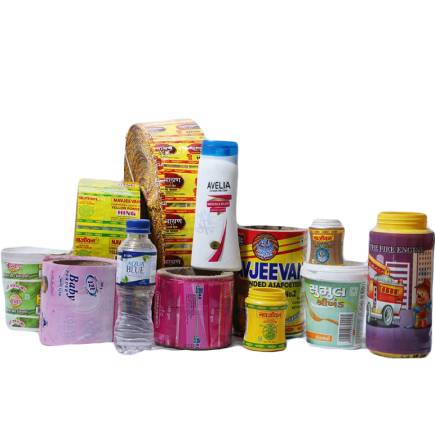PVC Heat Shrinkable Film will shrink after heating. Most people don’t understand the reason. They just take it as a property of shrink film to answer. Today, the PVC Shrink Film Supplier will tell you the principle of shrink film shrinkage. .
In fact, the shrinkage of heat shrinkable film after heating is a physical phenomenon, which needs to be explained by certain physical knowledge. Simply put, the thermal motion of molecules causes the film to shrink.
Although PVC Film has good quality, many people say that this is a chemical product after all. After all, the price and performance of pvc heat shrinkable film are not as good as natural materials. Toxicity and odor cannot be avoided, and it is destructive to the environment, but In fact, this is not true, because the raw materials for the production of PVC films are usually extracted by special operations, and the toxic substances in them are also extracted, so we can guarantee that the PVC film is completely non-toxic, and it will not harm the human skin or Harm to the respiratory system.
In the production of PVC Heat Shrinkable Film, the amount of plasticizer added is small, so it is difficult to plasticize, and the method of increasing the plasticizing temperature will increase the possibility of thermal decomposition of PVC. Adding an appropriate amount of ACR processing modifier to the formulation can improve processing performance. The solubility parameters of ACR and PVC resins are similar, and the compatibility is good. The adhesion between the two is greater. The hardness of ACR is greater than that of PVC. Under a certain stress, it produces greater friction, which makes the PVC particles more easily broken and melted. The gelation speed and melting quality of the material are improved, and the melt strength is high.

PVC Heat Shrinkable Film
The main properties of PVC heat shrinkable film are:
①Mechanical performance: firm, light weight, durable and scratch resistant;
②Chemical properties: resistance to atmosphere, chemical trial production and biological trial production, insulation properties, electrical resistance, heat insulation, noise reduction;
③Other physical properties: waterproof, greaseproof, and airtight. It can be collapsed into hard or soft, transparent or opaque products according to requirements; high-frequency welding or heat sealing; easy to color and print.
④Processing performance: It is easy to adopt all the processing technologies in the current plastic processing. Such as injection molding, extrusion molding, Huan molding, calendering, rotational molding, coating and so on.
PVC heat shrink packaging machine can be processed and cut arbitrarily. It is commonly used in molds, hydraulic presses, and other parts that need heat insulation. It can also be used for self-made roofs and other parts that need heat preservation. Save energy, reduce heating time, reduce heat conduction to equipment, and have good heat insulation effect.
Different container shapes have different requirements for material shrinkage. For example, an approximately cylindrical container with a low shrinkage rate can be considered to use OPP or PVC materials, while a container with a more curved or streamlined design can be considered an OPS film with high shrinkage rate and strength.
OPS film can be closely attached to containers of different shapes, not only can print exquisite patterns, but also meet the use of novel packaging containers with different shapes. OPS is non-toxic, tasteless, oil-resistant, and meets food hygiene standards. It allows designers to use eye-catching colors to achieve 360° label design, give full play to creativity and imagination, and make label patterns more vivid and prominent The image on the shelf has an unexpected container effect. For example, the new curved glass bottle of Blue Ribbon Beer in China uses a high shrinkage OPS substrate and uses a solvent-based adhesive for labeling.
Copyright © HUBEI HYF PACKAGING CO., LTD. All Rights Reserved | Sitemap
| Powered by

SEOKeywords:Shrink Wrap Film Customized Biodegradable Shrink Film Pvc Shrink Film Rolls Flexible Packaging Film Petg Shrink Film Properties Custom Printed Shrink Film High Shrink Petg Shrink Film China Pvc Shrink Wrap Film Shrink Sleeve Plastic Label Films Shrink Sleeve Packaging Pvc Shrink Film Manufacturing Process Pvc Super Clear Shrink Film Heat Shrink Film Roll Pvc Shrink Film For Bottle Label Price Shrink Wrap Uses China Shrink Film Pvc Clear Shrink Film Printable Shrink Film Plastic Shrink Film